- Publication: Market Logic Software
- Publication Date: 2023
- Organizations mentioned: Insight Platforms, Unilever, Vodafone, AstraZeneca, Tesco
- Technical background required: Low
- Estimated read time (original text): 40 minutes
- Sentiment score: 70%, Somewhat positive
TLDR
Goal: The report aims to understand how AI is transforming market and consumer insights within large organizations. It seeks to provide a current snapshot of AI’s role in the industry and predict future trends, influenced by the growing importance of AI in data analysis and decision-making processes.
Methodology:
- The study employs a comprehensive survey of enterprise companies with more than 1,000 employees.
- The sample comprises two groups: 1)125 managers and leaders of insights function, 2) 102 business users and stakeholders for research and insights.
- Qualitative depth interviews were also conducted with senior insight leaders at five global organizations.
Key Findings:
- A majority of insights teams (64%) and stakeholders (74%) hold a positive view on AI’s impact in research and insights, particularly in trend spotting, enhancing productivity, and managing knowledge.
- A significant portion of insights teams (25%) express caution towards AI, with concerns about data privacy, accuracy, and maintaining quality standards. This caution is less pronounced among stakeholders (12%).
- Four out of five insights teams foresee AI improving departmental productivity, especially in time-saving activities like analyzing survey data, knowledge searching, and interpreting qualitative research.
- A large percentage of stakeholders (74%) predict AI will increase demand for research and insights. Insights teams are slightly more conservative in their expectations, with 53% anticipating this growth.
- Insights teams expect AI to decrease time spent on basic analysis and increase the focus on advisory roles, such as insights communication, storytelling, and data interpretation.
Recommendations:
- Insight teams should maximize alignment and clarify expectations of AI with stakeholders.
- Companies should map the likely impacts and efficiencies resulting from AI across team activities.
- It is necessary to plan for training and development alongside the adoption of AI tools; in-demand skills will include coaching stakeholders, explaining data, and storytelling.
- Building a proactive business case is important for retaining and growing headcount in insight teams.
- Insight teams should work with compliance and IT security teams to develop appropriate policies for data privacy and confidentiality.
Thinking Critically
Implications:
- Widespread adoption of AI in insights and research could significantly enhance business efficiency and decision-making. Companies not adopting AI risk falling behind in market competitiveness due to slower and less sophisticated analysis capabilities.
- The shift towards AI-driven insights could lead to economic changes, with increased demand for AI expertise and a potential decrease in traditional research roles. This shift might necessitate reskilling and upskilling in the workforce.
- Increased reliance on AI raises concerns about data privacy and the ethical use of AI, prompting a need for stringent policies and regulations to safeguard consumer information and ensure ethical AI practices.
Alternative Perspectives:
- The report’s findings, based on surveys and interviews, may not fully capture the diverse range of industries and organizational sizes, potentially leading to skewed perspectives on AI’s impact.
- There might be an overestimation of AI’s current capabilities and its immediate impact on the market research industry, underestimating the challenges in AI implementation and integration.
- The report could undervalue the continuing importance of human intuition and expertise in research, which AI cannot fully replicate or replace.
AI Predictions:
- In the next few years, AI will become more deeply integrated into market research, with advanced analytics becoming a standard tool.
- We will likely see the emergence of hybrid roles where professionals are skilled in both AI technology and traditional research methodologies.
- AI will enable a shift in research focus from data collection and basic analysis to more complex, interpretive, and strategic levels of market research.
Glossary
- Insights teams: The department responsible for their organization’s market research, consumer insights, and in many cases data analytics relating to customer or marketing data.
- Stakeholders: Business users in marketing, operations, sales, strategy, product management or other roles who make frequent use of research and insights data.
- Research, insights, and data: This incorporates primary market research surveys and qualitative research; social listening analysis and behavioral analysis of data sources from within and outside an organization; desk research and competitor intelligence; and secondary data/subscriptions to syndicated market data and reports。
- AI: For the purposes of this report, AI is limited in scope to applications for research, data, and insights. This includes analysis of numeric, or text or visual data using established technologies and methods such as NLP, Emotion AI, and visual analytics; as well as more recent developments in generative AI and new applications grounded in LLMs.
Figures
Members also get access to our comprehensive database of AI tools and fundraising


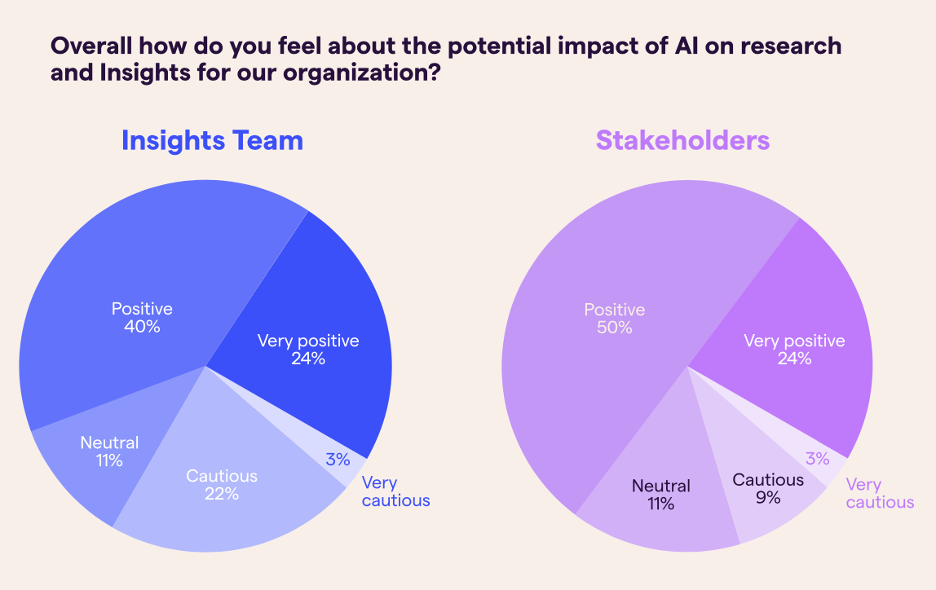


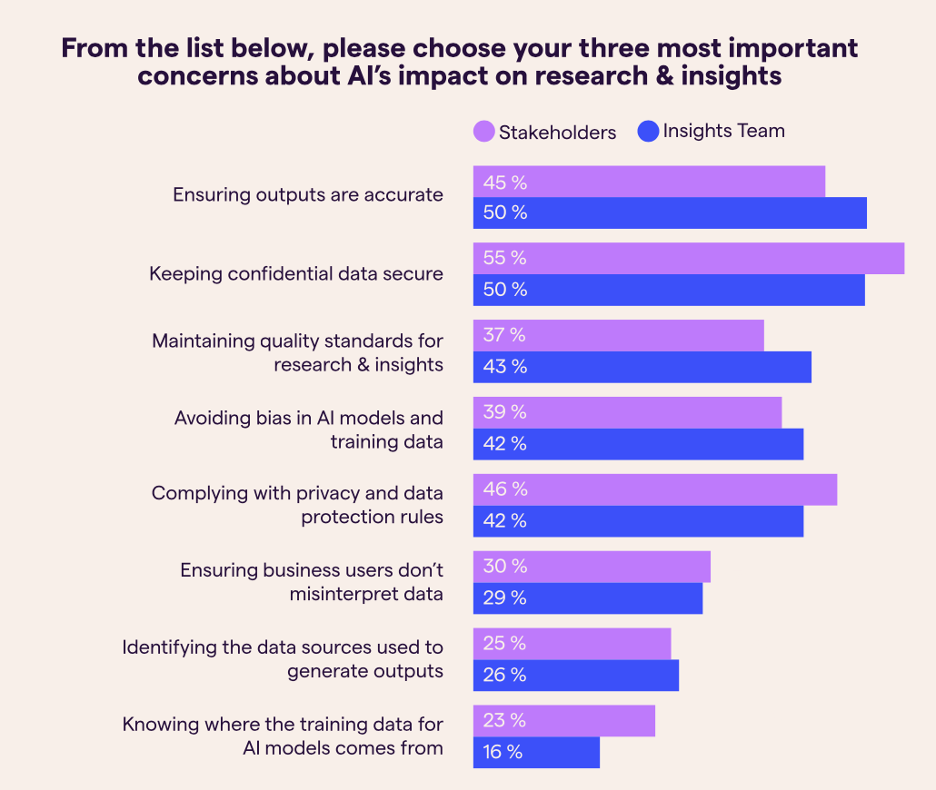
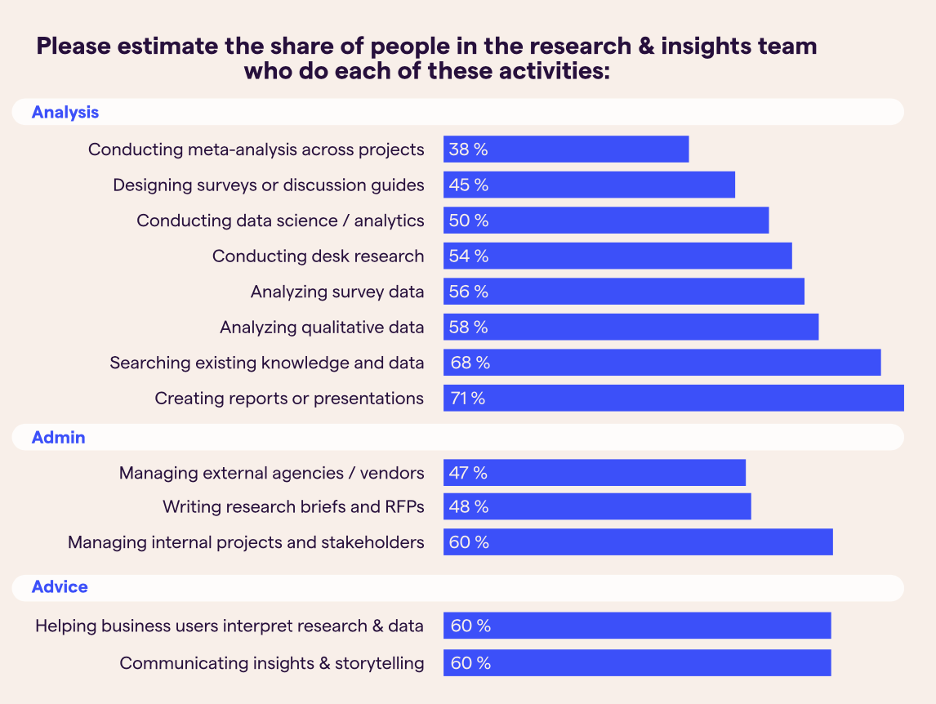


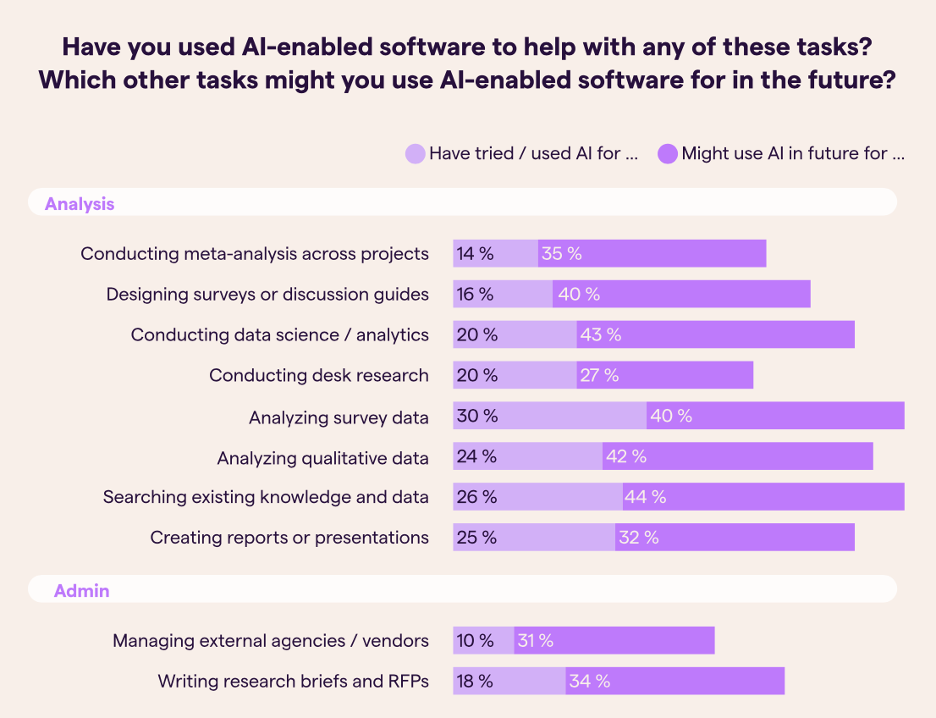
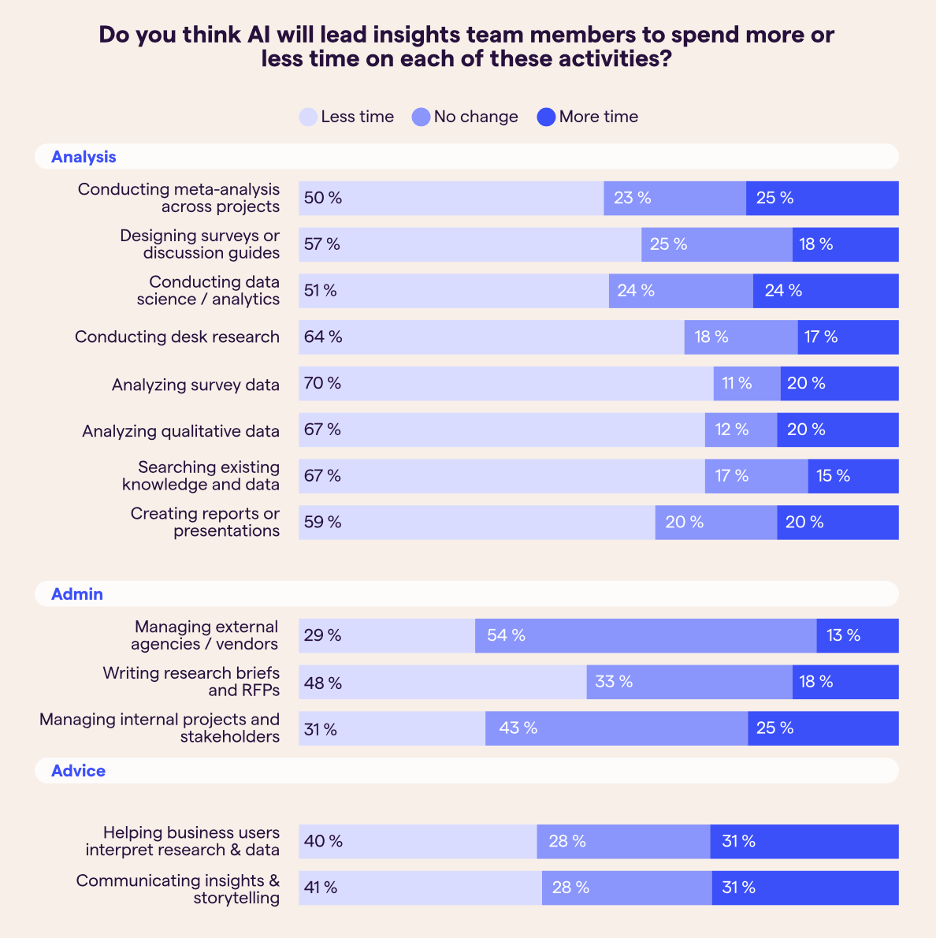
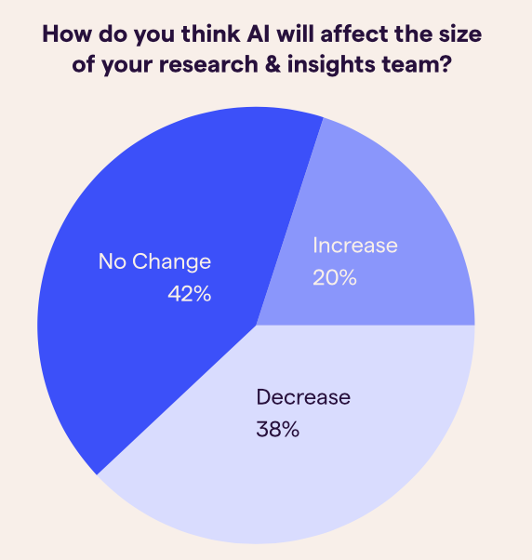
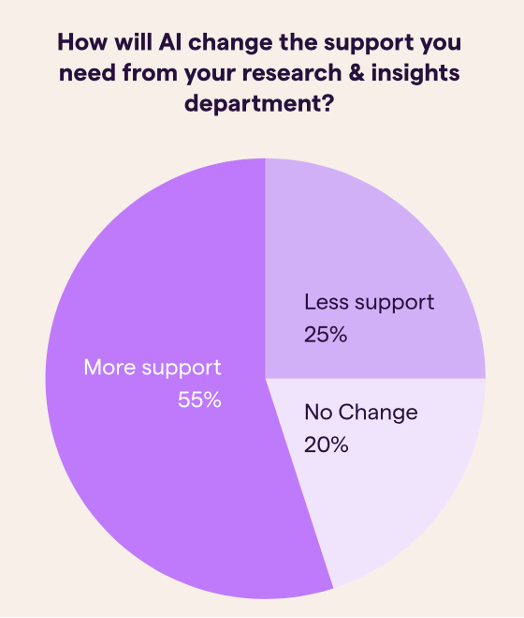
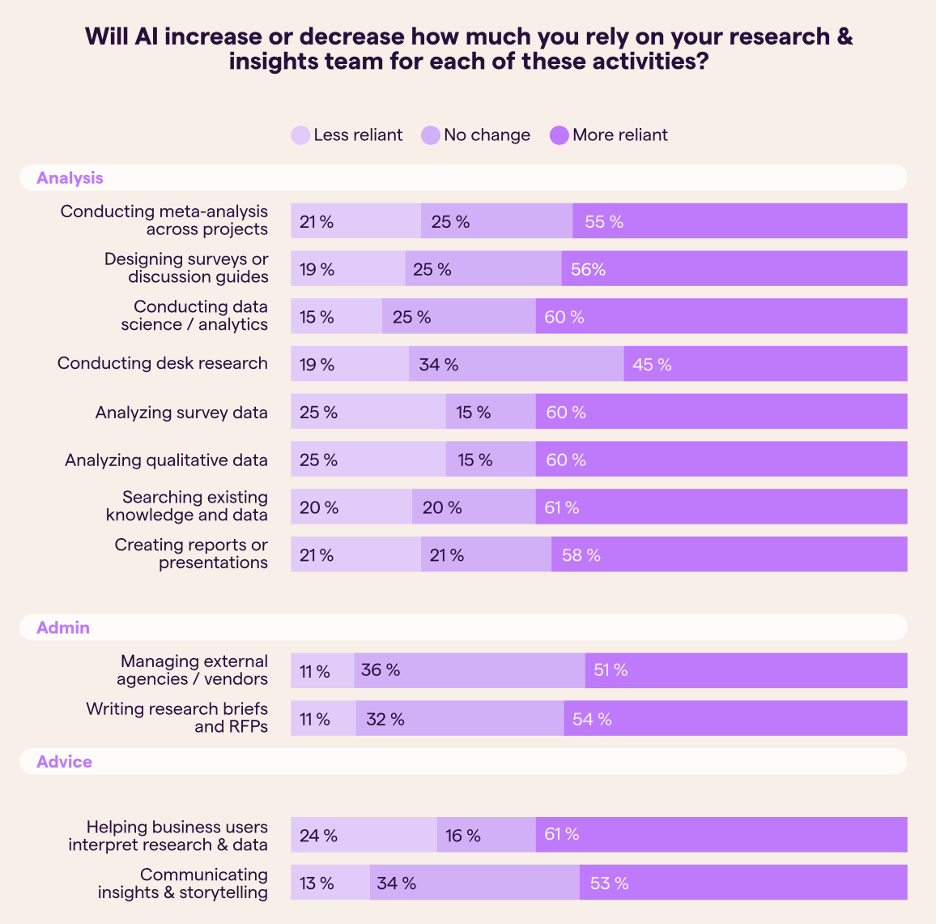
 Join hosts Anthony, Shane, and Francesca for essential insights on AI's impact on jobs, careers, and business. Stay ahead of the curve – listen now!
Join hosts Anthony, Shane, and Francesca for essential insights on AI's impact on jobs, careers, and business. Stay ahead of the curve – listen now!


